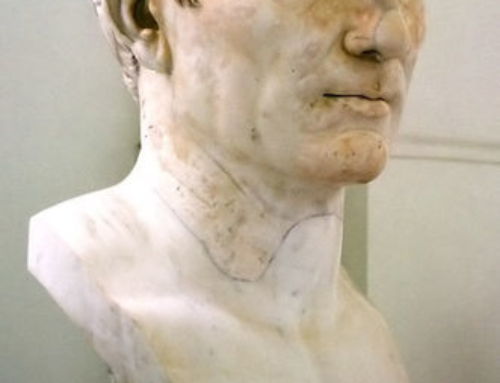One of the advantages of an extended stay in Jerusalem is a chance to dig more deeply into the city’s rich history and traditions. Today I worked in the Ecole Biblique library in the morning, but decided to look for some books I couldn’t find here at the Franciscan Study Center in the Old City.
The Biblicum is located on the Via Dolorosa next to the Church of the Flagellation. This section of the Old City runs along the North side of the Temple Mount where the Antonia Fortress would have been. The Antonia Fortress is the traditional site of Jesus’ trial before Pontius Pilate. At the far end near the Lions Gate is the beautiful Romanesque Church of St Anne and in the crypt below the site the Latin Church venerates as the birthplace of the Blessed Virgin. Next door the Greeks have a chapel with steps leading to the grotto below which they venerate as the home of Anna and Joachim. The two locations are virtually next to each other and the tradition can only accurately be traced to the sixth century, although the tradition is rooted in older legends. Either way, we venerate this site as her home and it is a beautiful thing to pray there.
As you head from there down the Via Dolorosa there is a complex of sites associated with the trial of Jesus. The Church of the Flagellation is built on the site of his scourging and is maintained by the Franciscans. Just beyond that the Sisters of Zion convent is built over the site of the Pavement where the soldiers mocked the Lord and as part of this complex of underground excavations is the Ecco Homo Arch–where Pilate said, “Behold the Man!”. Archeologists have shown that both the pavement and the Arch date to the time of the Emperor Hadrian–some 100 years after our Lord’s triumph–when Jerusalem was being rebuilt (after the destruction of 70 AD) as a Roman city. Nevertheless, this was the site and the visible pavement and arch remind us of what took place there.
A bit further along the Greeks have a chapel in another underground grotto: the prison of Jesus, the two thieves and Barrabas. This dungeon looks pretty convincing. There is a bench with a place for the prisoner’s legs–like stocks. There is a deep pit where Barrabas was thrown. Is it the exact site? Are there other prisons of Jesus? Yes. At the Church of St Peter Gallicantu is the pit into which he was thrown before his trial at the Sanhedrin, and at the Church of the Holy Sepulchre is another dungeon where he was kept while the place of crucifixion was being prepared. All of these explanations are plausible, but it is also wise to remember that just as the buildings show 2000 years of layer upon layer development and history, so the stories and traditions are also complex and multi-layered. Best to visit them with an open heart and a wondering spirit to sense with awe the reality of the events that took place right here in this place.
This week–the first week of Mary’s month and the weekend of Mother’s Day in USA I am focussing my prayers and pilgrimage on Mother Mary. That’s one of the reasons I visited her birthplace today. Next week I want to head over to the Cenacle where Pentecost took place and where she became Mother of the Church. Also over there on Mount Zion is Dormition Abbey–the site of her falling asleep in the Lord.
I’m also remembering my own Mom who passed away the on Advent Sunday last. May God have mercy on her soul and all the faithful departed and so Holy Mary, Mother of God Pray for us sinners now and at the hour of our death.







Leave A Comment
You must be logged in to post a comment.